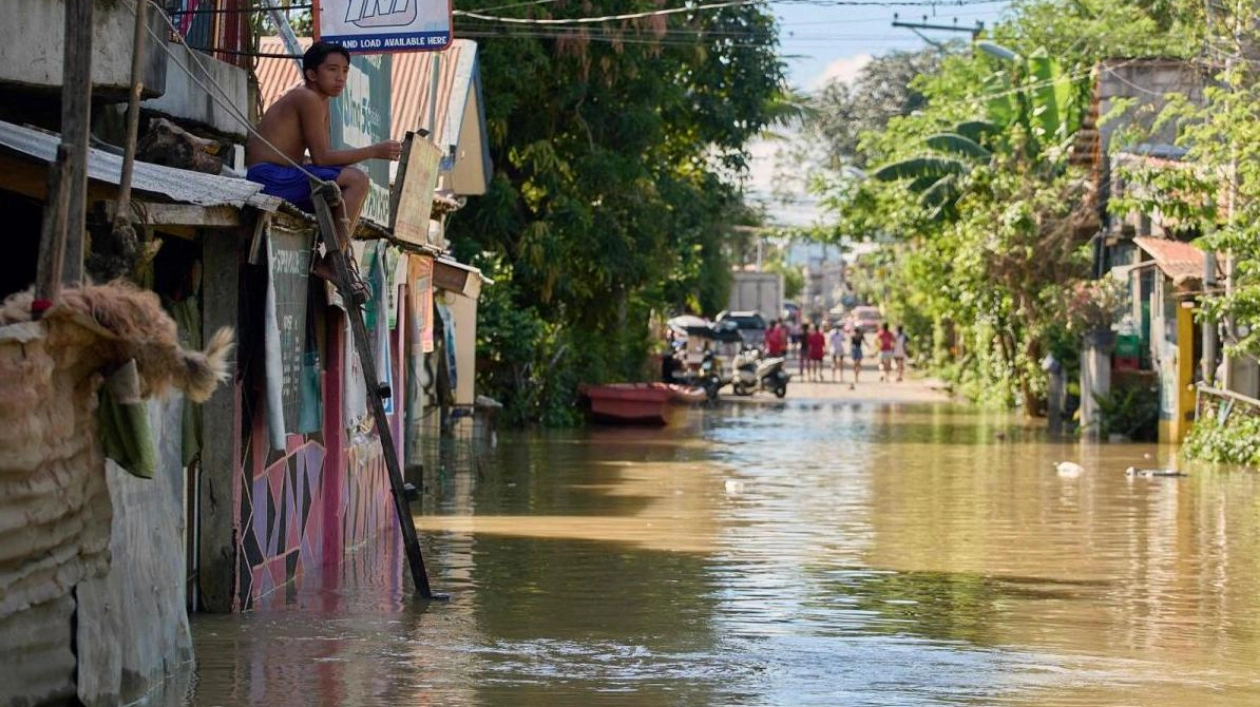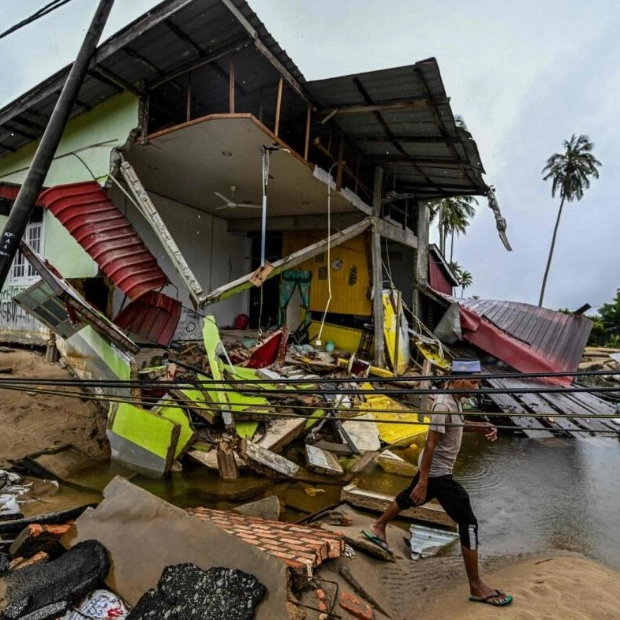A young person sits on a rooftop, gazing down at a flooded street caused by a swollen river due to heavy rains induced by Super Typhoon Man-yi in Tuguegarao City, Cagayan province on November 19, 2024. — AFP
The death toll from Super Typhoon Man-yi in the Philippines has climbed to 12, according to the national disaster agency, as widespread flooding began to recede. Man-yi submerged villages and destroyed weak structures across the archipelago over the weekend, with maximum sustained wind speeds reaching 185 kilometres (115 miles) per hour. This was the sixth major storm to hit the Philippines in a month, contributing to at least 175 deaths and displacing thousands, while also devastating crops and livestock. Most of the fatalities occurred in mountainous areas north of Manila, including seven people killed by a landslide that buried their house in Nueva Vizcaya province. In the coastal town of Dipaculao, where Man-yi made a second landfall, a boulder crushed a house, burying three people alive, according to Ariel Nepomuceno, a senior official with the government's civil defence office. Four people remain missing, Nepomuceno added.
"We are now in the recovery phase, and people have started to repair their homes," Nepomuceno said. "Construction materials have been arriving in the hardest-hit provinces." In Tuguegarao, floodwaters caused by a dam release and the swollen Cagayan River have begun to recede after inundating thousands of homes following the typhoon's departure. "The water level has dropped to just one foot (0.3 metres) high. Some evacuees have also returned to their homes," city disaster official Ian Valdepenas told AFP on Thursday. Schools and government offices have resumed operations. Approximately 20 major storms and typhoons impact the Southeast Asian nation or its surrounding waters annually, resulting in numerous fatalities, but it is uncommon for multiple such weather events to occur within a short period.
Source link: https://www.khaleejtimes.com






